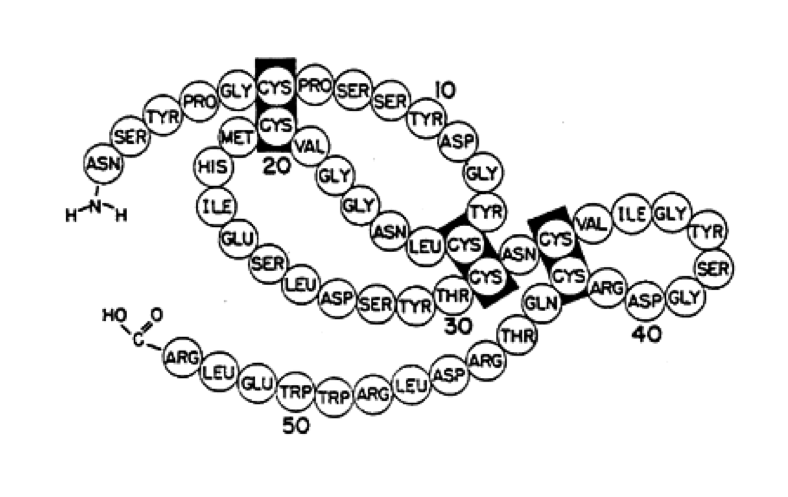
At the beginning of this year, the State Drug Administration made it clear that EGF should not be added to skin care products. This has forced the small partners who have used [EGF products] to wonder and struggle…
Only half of the [growth factor essence] bought at a high price has been used. Do you use or not use the rest?
Don’t worry, let the dermatologist tell you.
EFG is what?
EGF is an abbreviation of Epidermal Growth Factor, which is also called epidermal growth factor. It is a 53-amino acid [53-peptide] with a molecular weight of 6200 Dalton units.

It has been known by more and more people in recent years. It is not only popular in dermatology and burn departments of hospitals, but also famous in skin care products. Even the publicity is one level higher than other ingredients-

It is quite remarkable to have the endorsement of the Nobel Prize. Check the efficacy again, [repairing cells], [improving relaxation], [relieving wrinkles], [restoring elasticity], [promoting collagen]… It is not only against the age, but also against the weather.
Seeing here, you may have 3 questions:
- Does EGF really have a Nobel Prize? Does EGF have the effect of publicity? Is [EGF] in skin care products the winner?
EGF really has a Nobel Prize
In 1986, Stanley Cohen and Rita Levi-Montalcini won the Nobel Prize in Physiology or Medicine for their discovery of [growth factors].
First Rita Levi-Montalcini discovered in 1950s that nerve growth factor (NGF) can promote the growth of nerve fibers from ganglia. In the process of continuing to study NGF, Stanley Cohen accidentally discovered the existence of EGF. It took him several years to purify and determine the amino acid sequence of EGF and obtain the above full-body photos of EGF.
Since then, there have been more and more literature reports on EGF.

EGF is really a good thing
Human beings start from embryonic cells, one changes two, two changes four, four changes eight… But if this goes on, human beings are still a lump of cells.
At this time, growth factor is needed to help. It can make cells begin to differentiate at a certain moment, becoming blood vessels, fibroblasts and endocrine cells of thyroid gland, ovary and pituitary gland.
We can understand growth factors as commanders that can regulate cell growth, and EGF is one of them.

For EGF, its (main) function is to promote epidermal cell regeneration and promote skin wound healing by stimulating the proliferation and migration of keratinocytes.
It can promote the formation of granulation tissue and stimulate the movement of fibroblasts. EGF is not only found in skin but also distributed in some glands in human body.
At present, in clinical application, its indications are external treatment of burns, trauma and surgical wound healing to accelerate the growth of transplanted epidermis.
[EGF] in skin care products may be [fake]
In addition to the name of Epidermal Growth Factor, EGF also has an English name called sh-oligopeptide-1, which translates into [human oligopeptide-1].
As it happens, there is also a component called oligopeptide-1, which translates into [oligopeptide-1]. Oligopeptide-1 does not have [whole body photo]. It is a synthetic peptide composed of glycine, histidine and lysine.
Oligopeptide-1 was not originally famous in what and was included in the Catalogue of Names of Used Cosmetic Raw Materials in China (2015 edition). It is generally used as a skin conditioner.
[Human Oligopeptide-1] is only one more word [human], and there is an endorsement of the Nobel Prize. The best way for [Oligopeptide-1] to reach the sky in one step is, of course, to [rub the heat].
Therefore, some skin care product manufacturers have begun to hype their products with the concept of EGF, but the composition list of skin care products is actually [oligopeptide-1].
For ordinary consumers, whether oligopeptide-1 or human oligopeptide-1 is added in it will not be known unless a test is taken (samples must have been submitted to relevant departments before listing, but the samples are samples …).
Civet cats or prince, this is a problem…
Why does the country prohibit EGF from being added to skin care products?
EGF does have many effects, so why should it be banned from skin care products?
There are two main factors:
- EGF itself is applied in the medical field and can promote cell differentiation. If abused, there may be potential safety problems. EGF is a macromolecule composed of 53 amino acids. On the surface of normal human skin, there is no possibility of [absorption] and it cannot enter the skin at all. It is invalid.
Therefore, the State Drug Administration, based on safety and effectiveness considerations, prohibits EGF from being used as a cosmetic raw material.
Is the hyped [oligopeptide-1] used in what?
Oligopeptide-1 is generally used as [skin conditioner], but skin conditioner is a relatively broad concept. For the time being, there is no evidence that oligopeptide-1 has the functions of repairing skin barrier and promoting collagen regeneration.
However, there are no reports of its side effects for the time being.
In short, oligopeptide-1 is not a drug, has no reactive power and no therapeutic effect.
The impetuous trend in the skin care market has a long history. This is not only the responsibility of manufacturers. Consumers who are impatient and want to eat hot tofu also need to reflect and know more about skin. Perhaps they can be more rational in their consumption decisions.
As for the small partners who have already bought relevant products, they can throw them away…
